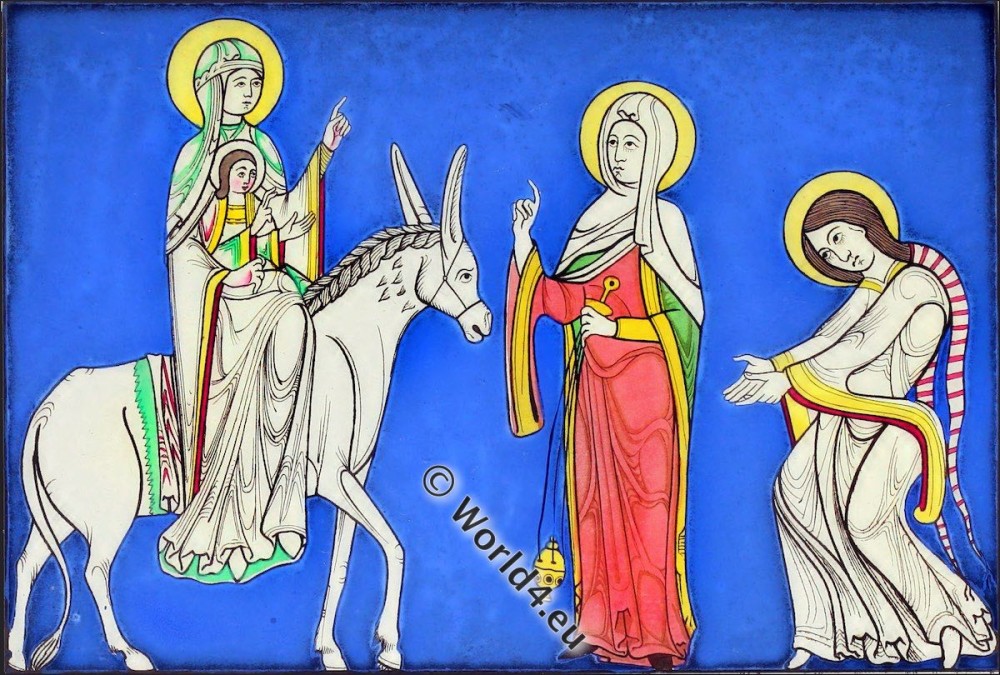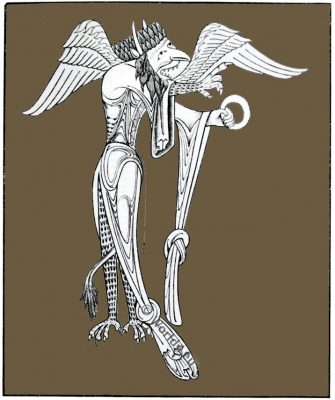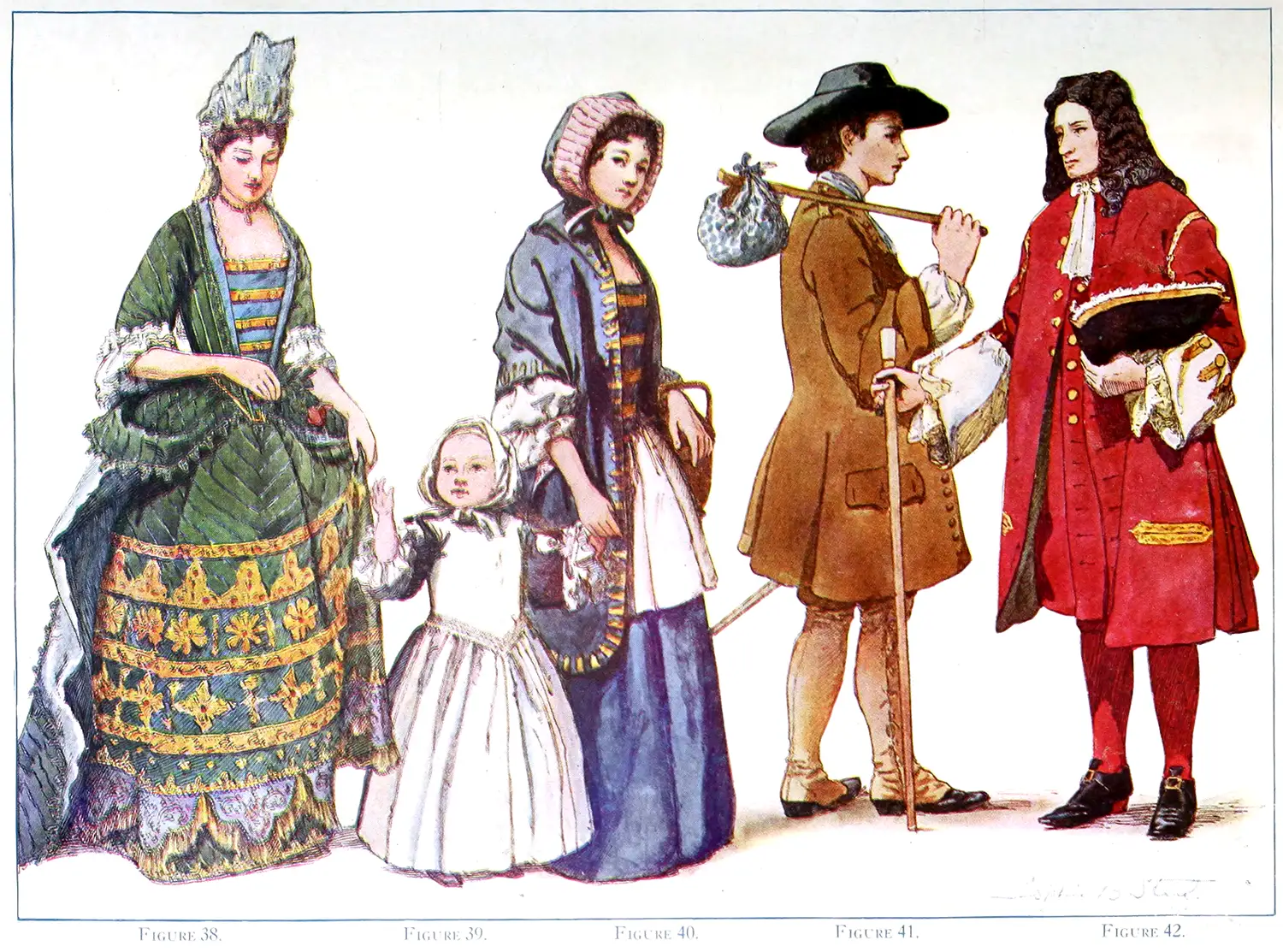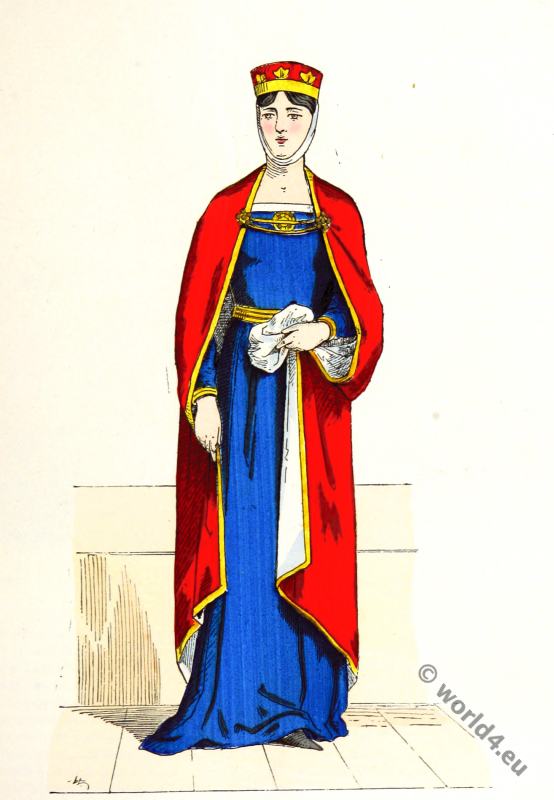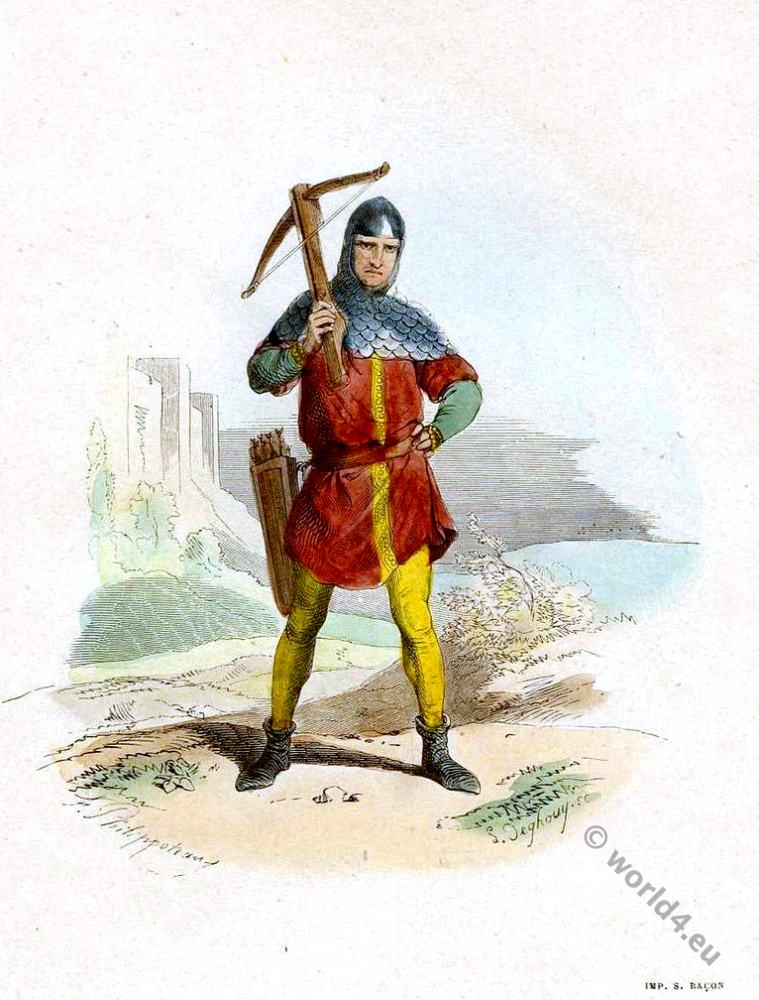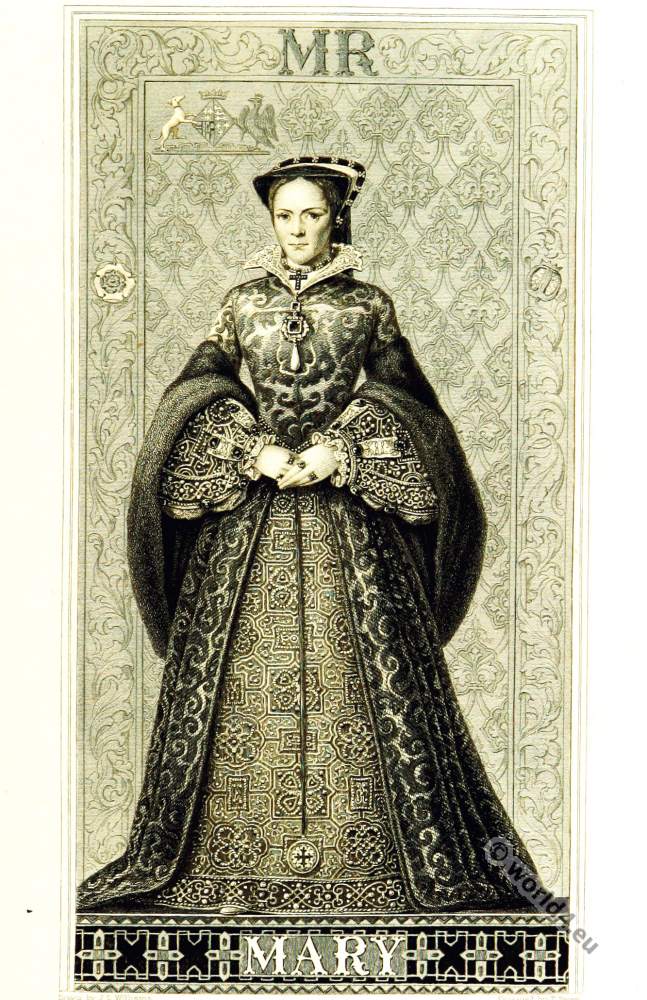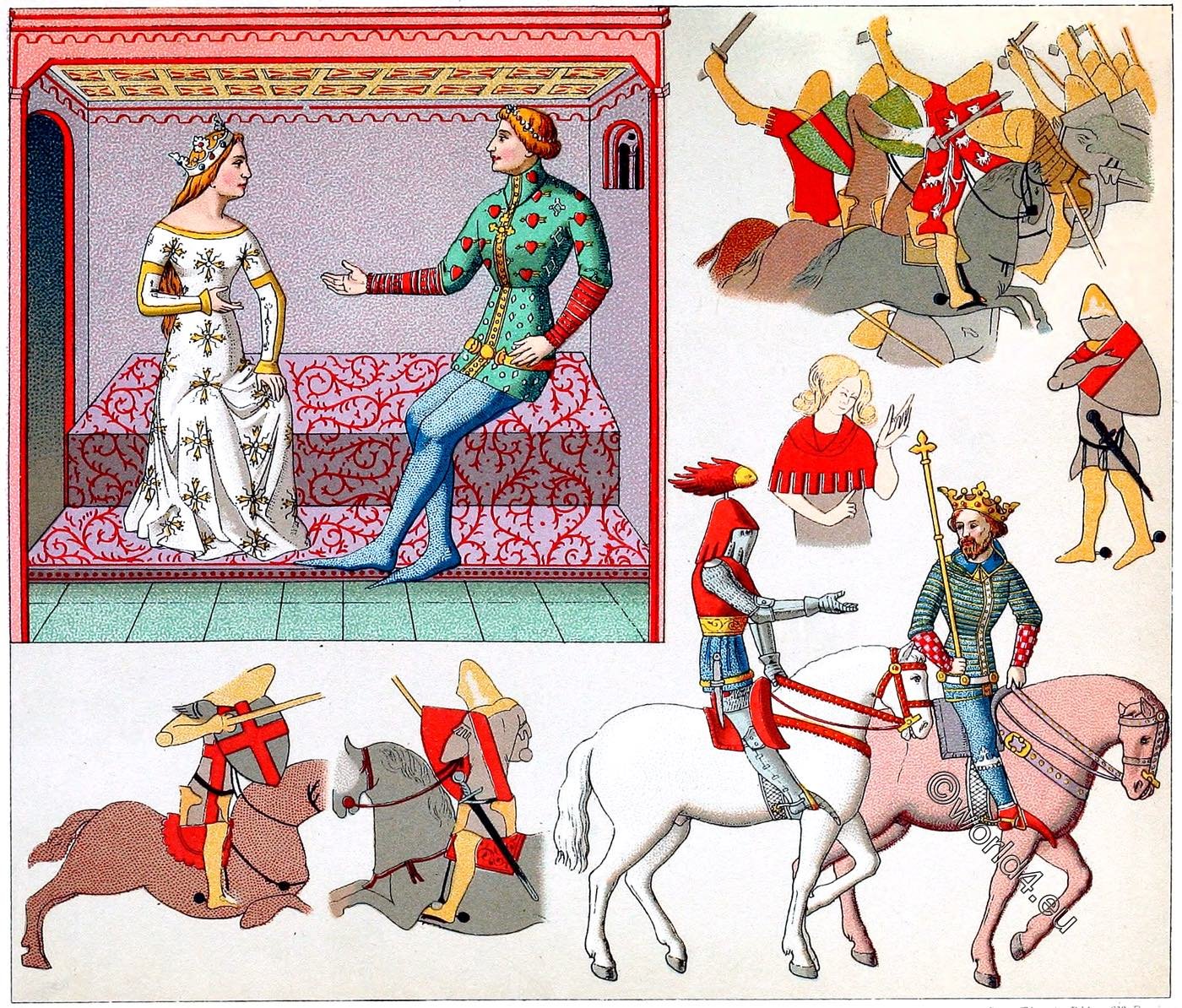LADIES FASHION OF THE TWELFTH CENTURY.
THE figures on the present plate are taken from different illuminations in the Cottonian Manuscript Nero C. IV. executed, probably, before the middle of the twelfth century.
They occur severally on the 7th, 11th, and 12th leaves of the manuscript. The subjects of the original drawings are taken from the New Testament—the lady riding on an ass represents the Virgin Mary on her way to Egypt. These figures present interesting examples of the female costume among our ancestors in the first half of the twelfth century.
The most remarkable characteristic was the long hanging sleeves of the tunic, which, in some instances, were obliged to be tied up in knots when the bearers were moving about. This fashion is turned into ridicule in a droll figure of a devil given in the same MS. and represented in the cut at the end of our present article.
It has been observed, that the dresses of the ladies at this time were unusually oriental in their character; this style was probably introduced by the crusaders, who, among the spoils of the Saracens, must have brought home for their families many of the rich dresses of the Eastern ladies.
The long plaited hair resembles, in some degree, that of the statue of Queen Clotilda from the church of Corbeil, in France, represented in one of the plates to the present work.
The cut at the foot of the preceding page is taken from the same manuscript. The subject of the whole illuminated page, of which this forms the lower compartment, is the Saviour changing the water into wine at the marriage at Cana. The upper compartment represents the wedding dinner, with Christ and the other guests at table. Christ is blessing the water, which he holds in his hand in a large drinking horn, the only vessel for liquids which appears on the table.
In the lower compartment, represented in our cut, the servants appear taking the water vessels from the cupboard, drawing the water from the well, and carrying it up stairs into the chamber where the guests are assembled at dinner. In the band separating the upper compartment from the lower we read in Anglo-Norman the words,-
The stair-case has a very primitive form—it appears to be made of a solid piece of timber, with grooves cut in the wood in which to place the feet in ascending or descending. A platted rope attached to the side serves the purpose of a rail.
Our initial letter is taken from a splendidly illuminated manuscript Bible of the twelfth century, preserved in the British Museum, MS. Harl. No. 2800.
Source: Dresses and Decorations of the Middle Ages by Henry Shaw F.S.A. London William Pickering 1843.
Related
Discover more from World4 Costume Culture History
Subscribe to get the latest posts sent to your email.

